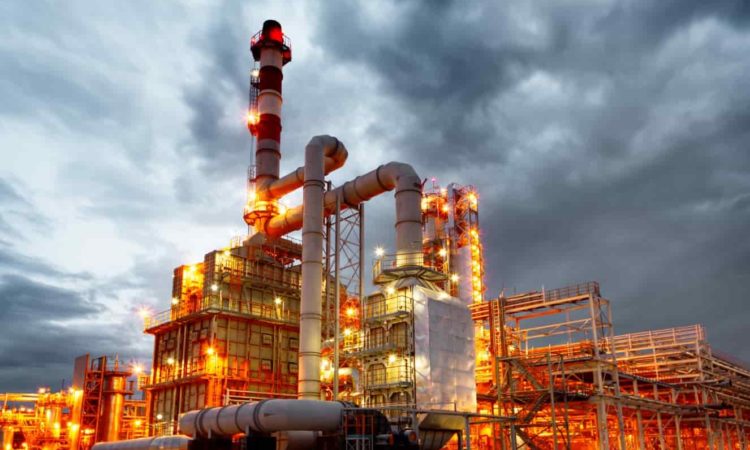An Unbiased View of Roar Solutions
An Unbiased View of Roar Solutions
Blog Article
The Best Guide To Roar Solutions
Table of ContentsThe Ultimate Guide To Roar SolutionsThe 25-Second Trick For Roar SolutionsSome Ideas on Roar Solutions You Should Know
In order to safeguard setups from a prospective explosion an approach of analysing and categorizing a possibly hazardous area is called for. The objective of this is to guarantee the correct choice and installment of tools to ultimately avoid an explosion and to guarantee safety and security of life.
(https://anotepad.com/note/read/5qf9qbmr)
No equipment needs to be set up where the surface area temperature level of the equipment is higher than the ignition temperature level of the offered risk. Below are some typical dirt dangerous and their minimal ignition temperature level. Coal Dust 380C 225C Polythene 420C (melts) Methyl Cellulose 420C 320C Starch 460C 435C Flour 490C 340C Sugar 490C 460C Grain Dust 510C 300C Phenolic Material 530C > 450C Aluminium 590C > 450C PVC 700C > 450C Residue 810C 570C The possibility of the danger being present in a focus high sufficient to create an ignition will differ from location to place.
In order to identify this danger an installation is divided into areas of risk depending upon the amount of time the harmful is present. These areas are referred to as Areas. For gases and vapours and dirts and fibers there are 3 areas. Zone 0 Zone 20 A harmful atmosphere is highly most likely to be present and may exist for long periods of time (> 1000 hours annually) or perhaps constantly Area 1 Zone 21 A harmful ambience is possible but unlikely to be existing for long periods of time (> 10 450 C [842 F] A category of T6 means the minimal ignition temperature is > 85 C [185 F] Hazardous area electric tools possibly created for use in higher ambient temperatures. This would showed on the rating plate e.g. EExe II C T3 Ta + 60C( This suggests at 60C ambient T3 will certainly not be exceeded) T1 T1, T2, T3, T4, T5, T6 T2 T2, T3, T4, T5, T6 T3 T3, T4, T5, T6 T4 T4, T5, T6 T5 T5, T6 T6 T6 A T Course score of T1 indicates the optimum surface temperature level created by the tool at 40 C is 450 C. Presuming the associated T Class and Temperature rating for the tools are ideal for the location, you can always use an instrument with an extra rigid Department score than required for the location. There isn't a clear answer to this question. It truly does depend upon the kind of equipment and what repair work require to be lugged out. Equipment with certain test treatments that can't be done in the field in order to achieve/maintain 3rd party ranking. Should return to the manufacturing facility if it is prior to the equipment's service. Field Repair Work By Authorised Employee: Challenging testing might not be needed however certain procedures might need to be adhered to in order for the equipment to preserve its 3rd party rating. Authorized personnel need to be utilized to perform the work appropriately Repair need to be a like for like substitute. New component have to be taken into consideration as a direct substitute requiring no unique screening of the tools after the repair service is total. Each item of devices with a dangerous ranking should be examined independently. These are detailed at a high level below, but also for even more comprehensive info, please refer straight to the guidelines.
How Roar Solutions can Save You Time, Stress, and Money.
The devices register is an extensive database of devices documents that consists of a minimum collection of areas to identify each product's visit this site place, technical specifications, Ex lover category, age, and environmental information. The proportion of Thorough to Shut evaluations will certainly be identified by the Equipment Risk, which is assessed based on ignition risk (the likelihood of a source of ignition versus the possibility of a combustible ambience )and the harmful area category
( Zone 0Area 1, or 2). Applying a durable Risk-Based Inspection( RBI )technique is important for making certain conformity and security in handling Electrical Devices in Hazardous Areas( EEHA).
The Definitive Guide for Roar Solutions

In regards to eruptive risk, a hazardous location is an environment in which an eruptive ambience is present (or might be anticipated to be existing) in amounts that need special precautions for the building and construction, setup and use devices. eeha certificate. In this write-up we discover the challenges faced in the workplace, the threat control steps, and the required expertises to work safely
These substances can, in particular problems, create eruptive atmospheres and these can have significant and awful consequences. Many of us are acquainted with the fire triangle get rid of any one of the three aspects and the fire can not happen, but what does this mean in the context of dangerous locations?
In many circumstances, we can do little concerning the degrees of oxygen in the air, however we can have considerable impact on sources of ignition, for example electric equipment. Dangerous locations are documented on the dangerous location category drawing and are recognized on-site by the triangular "EX-SPOUSE" sign. Below, among various other key details, areas are divided right into three kinds depending on the threat, the likelihood and duration that an explosive ambience will certainly exist; Area 0 or 20 is regarded the most dangerous and Zone 2 or 22 is considered the least.
Report this page